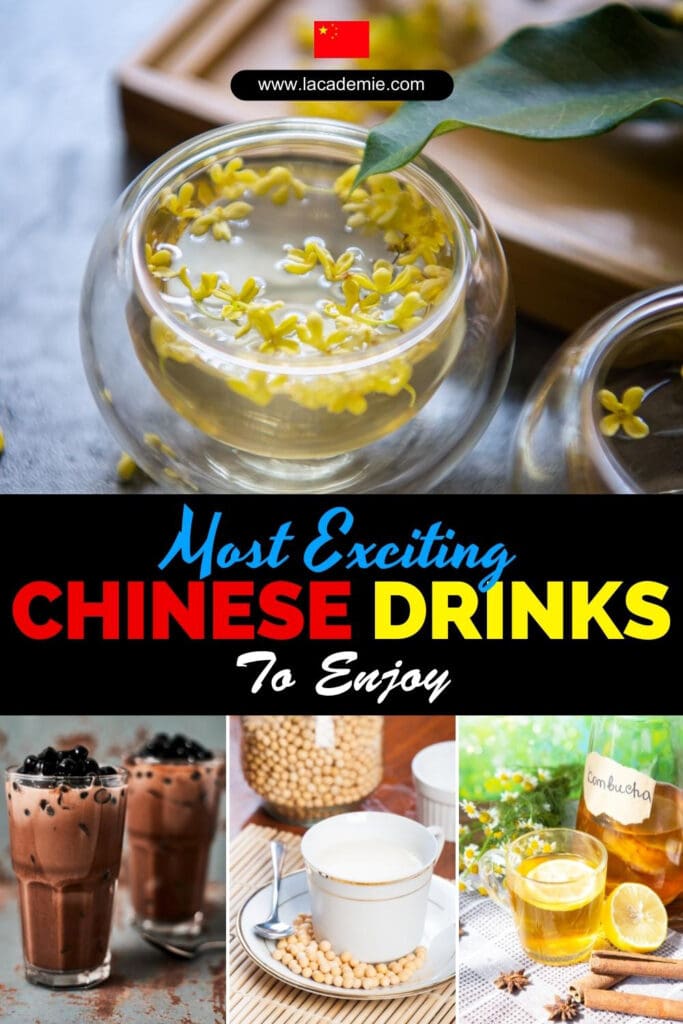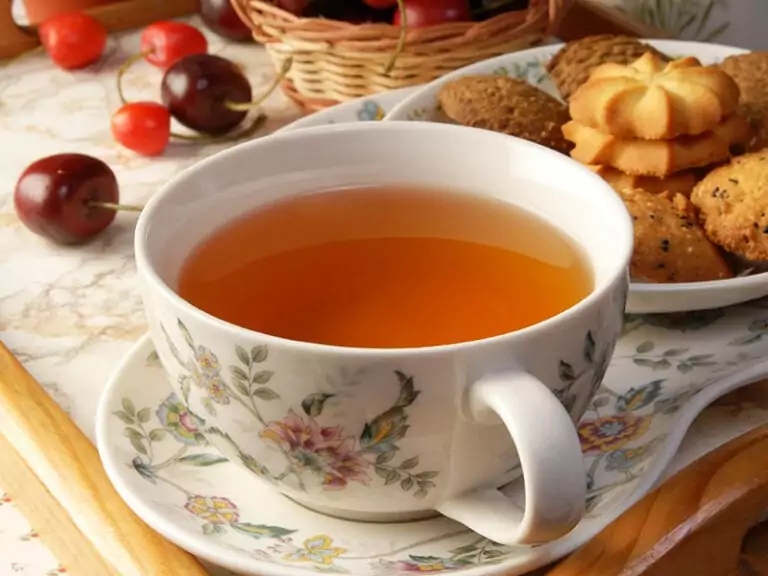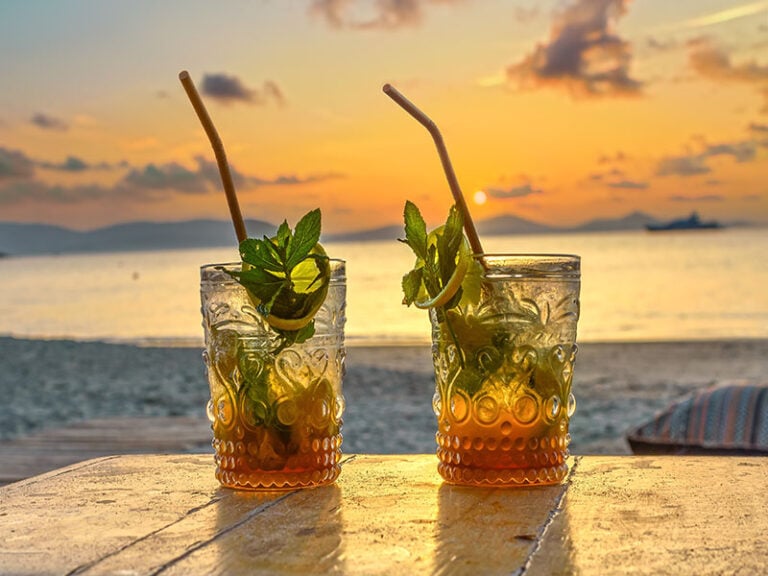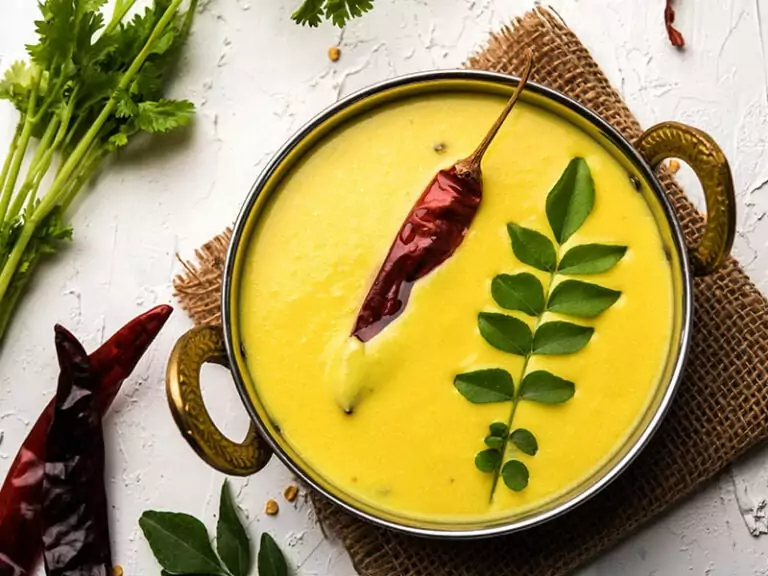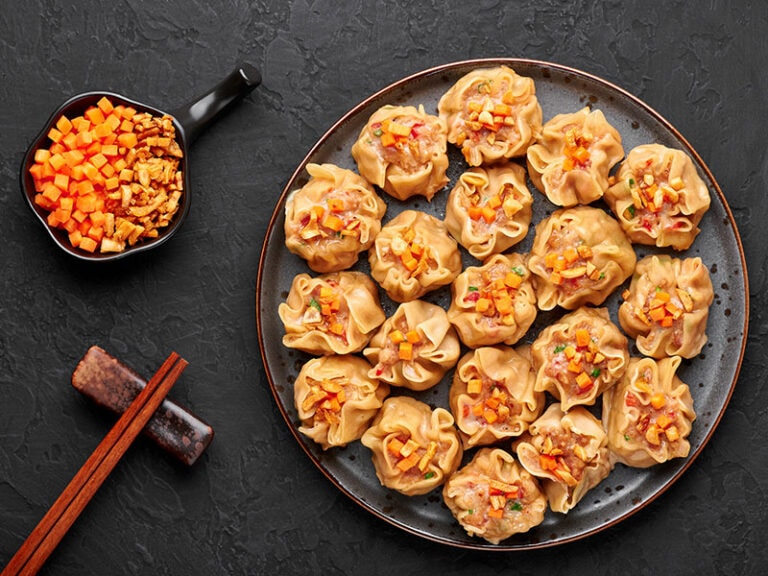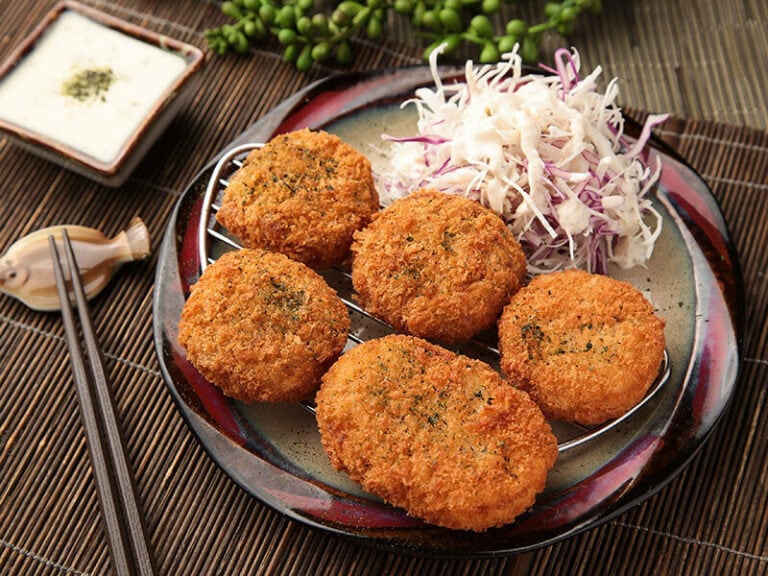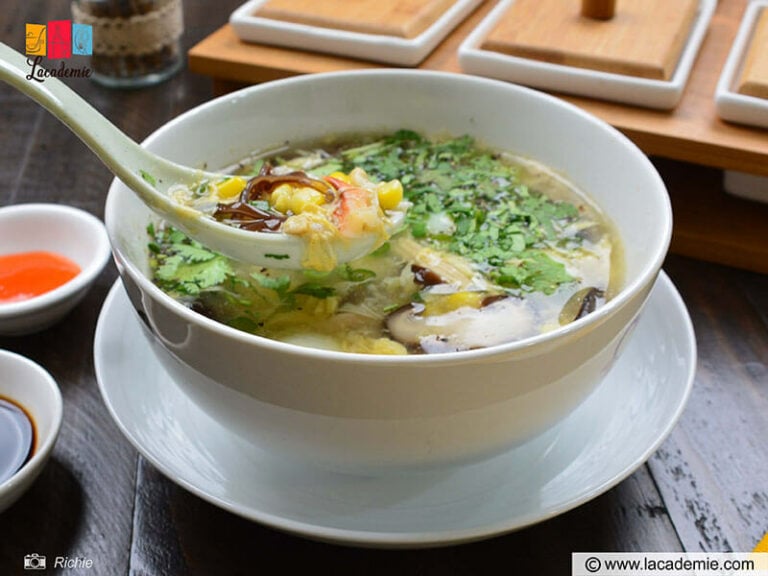Have you ever tried Chinese drinks? While many people in the world’s most populous country go for tea, soda, or freshwater when thirsty, other kinds of stronger stuff exist. Both alcoholic and kid-friendly drinks are never lacking in China.
The country is teeming with signature drinks that can be found nowhere else. At the same time, many beloved beverages are imported to suit the local taste. This post will cover every type of Chinese drink you need to know about.
Brief Overview Of Chinese Drinks
With its rich history and vast cultural diversity, China is home to various traditional and contemporary drinks. From teas and herbal infusions to alcoholic beverages and popular non-alcoholic concoctions, Chinese drinks offer a delightful mix of flavors, textures, and health benefits.
Tea, in particular, has been a part of Chinese history for thousands of years, with many different types, such as green, oolong, black, white, pu’er, and yellow teas. Herbal drinks, made from various plants, fruits, and flowers, are also popular in China for their potential health benefits.
The country also has a burgeoning beer industry and traditional breweries for wines, with several well-known brands gaining international recognition. In recent years, the popularity of non-alcoholic beverages like soy milk, bubble tea, and sugarcane juice has increased.
Traditional Chinese Tea
After enjoying the delicious dishes that Chinese cuisine offers, it is customary to round off your meal with tea. But what to choose from the numerous types of Chinese tea available? You will find the answer in this section.
1. White Tea
Non-alcoholic
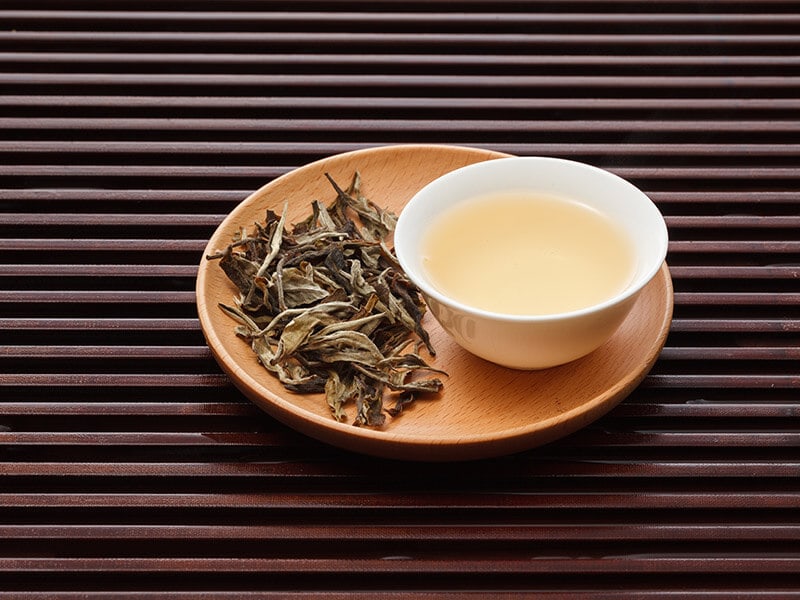
The mountainous Fujian province in southeastern China is well-known for this low-caffeine tea. Local people harvest the young tea buds and leaves in the early season when they still have snowy white hair, hence the name.
Those tender, delicate shoots are sun-dried or heated until they are fuzzy but still retain a light green color. To get the best out of its flavor and health benefits, you should brew it with water below 85°C (around 185°F), which is hot but not very foamy.
White tea has a very mildly sweet taste accompanied by a floral fragrance. It is very subtle, so you should avoid adding sugar or milk. After steeping, the tea usually has a pale yellow color and a lovely herbal smell.
There are wide varieties of white tea, such as monkey-picked one (not harvested by monkeys, though), silver needle, or white peony. They are all expensive but worth every cent you pay for them.
Where to find: Various restaurants and supermarkets in China offer white tea, but ideally, you should head to Fujian province.
Here is a close-up look at how Chinese people make white tea.
2. Black Tea
Non-alcoholic
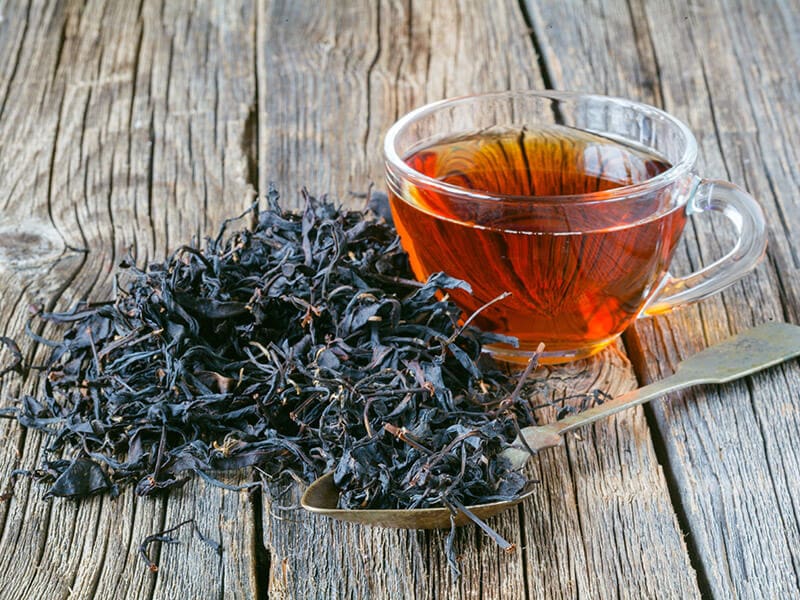
Black tea, named for its dark, withered, and brittle leaves, offers a captivating color ranging from a soft amber to a deep, alluring orange. The secret lies in the oxidation levels – the higher they are, the darker the tea becomes.
Crafted from the same Camellia sinensis plant, black tea sets itself apart through a meticulous fermentation and drying process. This unique metamorphosis has led the Chinese to label it fermented or dark tea affectionately.
A cherished element of Chinese tea culture for centuries, black tea has captivated countless generations with its vibrant flavors of fruity, earthy, or malty profiles. Its adaptability allows it to blend harmoniously with lemon or peach, concocting a revitalizing beverage.
Black tea has three primary types, each branching into various sub-categories, offering distinct tastes and prices. I recommend trying Xiao Zhong, Gongfu, or broken black tea for the best experience.
Where to find: Any Chinese tea shops, eating places, and supermarkets can provide you with premier black tea.
3. Green Tea
Non-alcoholic

Many traditional Asian recipes go nicely with this easy-to-make drink; a Chinese meal is no exception. In fact, green tea has been the most preferred form of tea in this country for millennia, from the time of the mythological Emperor Shennong.
Unlike other varieties of tea, which undergo a lengthy oxidation process, green tea is only pan-fried lightly before being steeped in hot water. The resulting drink possesses a light green color and a herbaceous taste evocative of fresh-cut grasses.
While brewing green tea sounds simple, different varieties require their own methods. By the rule of thumb, high-quality tea calls for cooler water and shorter steeping time than substandard tea. Otherwise, the grassy sweetness of the tea will turn bitter.
You’re probably familiar with Matcha from Japan. It is a green tea steamed and ground into powder. Meanwhile, Chinese people only pan-fry their leaves before brewing them for a lighter and fresher taste.
Where to find: Anywhere in China.
4. Oolong Tea
Non-alcoholic
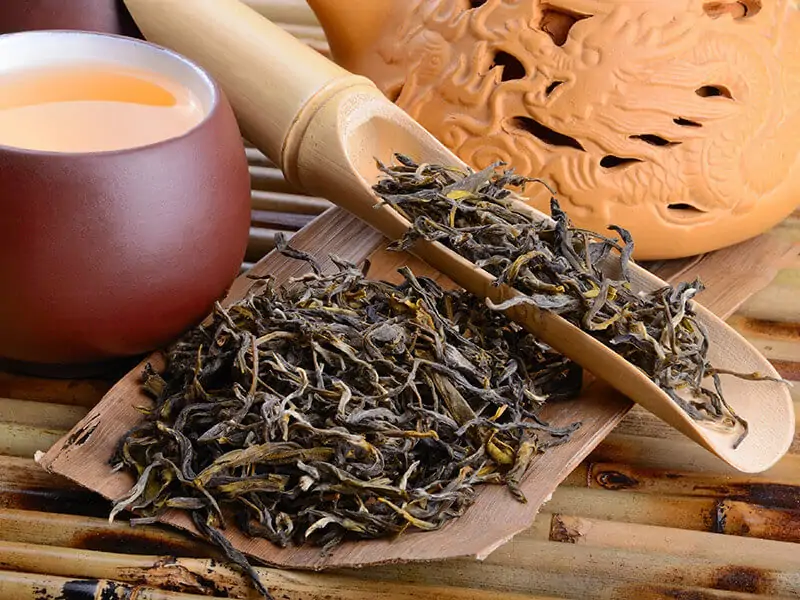
Oolong tea stands between green and black tea as a semi-oxidized drink. It comes in many forms and colors, depending on how people dry and roast the tea. Like green tea, products with low oxidation levels produce bright colors and a sweet scent.
Conversely, more oxidized oolong tea (higher than 50%) resembles black tea. After steeping, you can enjoy a nutty-tasting tea with deep shades of brown or orange.
Adjusting the oxidation is laborious work that drives up the production cost of oolong tea. The good news is that oolong is one of the most health-beneficial tea types. It can help you lose weight with its antioxidants that melt fat and reduce your cravings for food.
Where to find: while many places in China have oolong tea for sale, the best ones are the Wuyi Mountains and Anxi County in Fujian Province.
Learn about different types of oolong tea in 8 minutes here.
5. Tie Guan Yin
Non-alcoholic
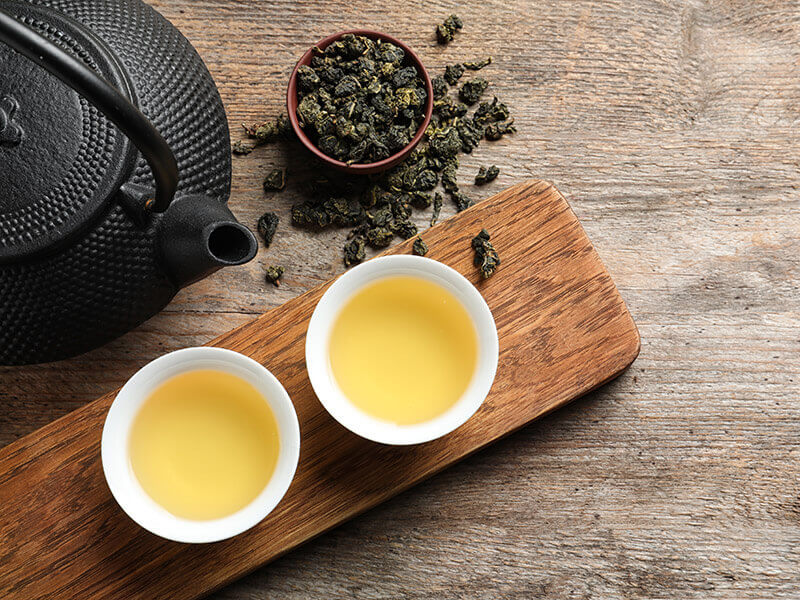
Usually translated as the “Iron Goddess of Mercy,” Tie Guan Yin is a beautiful drink with a rather pricey bill. The drink is a sub-category of oolong tea. This premium product first appeared in Anxi, Fujian, around the 19th century.
According to a cherished legend, a humble peasant, despite his poverty, diligently paid homage to an iron statue of Guan Yin, the Chinese Goddess of Mercy. Touched by his devotion, the Goddess revealed to him the location of a hidden treasure, which, to his delight, contained a precious tea shoot as a reward.
One sip of Tie Guan Yin will reveal a floral fragrance and sweet, berry-like smell. Even though the tea may leave behind streaks of bitterness, it will quickly turn into a lingering honey aftertaste.
Where to find: While Anxi County in Fujian Province is the cradle of Tie Guan Yin, other parts of China can offer tea at varying prices.
6. Chrysanthemum Tea
Non-alcoholic
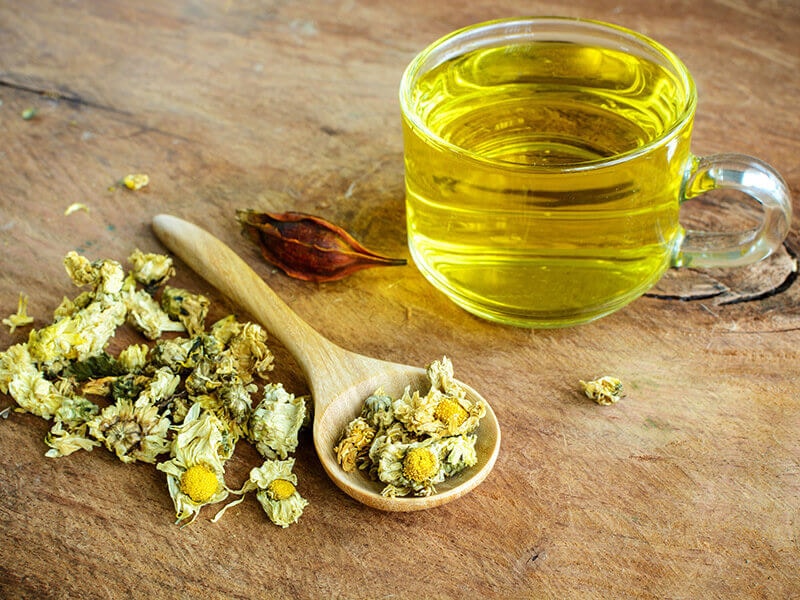
Many Chinese drinks are teeming with delightful flavors and amazingly beneficial nutrients. For example, chrysanthemum tea is rich in disease-preventing minerals such as potassium, magnesium, and phosphorus.
Unlike the varieties of tea mentioned above, chrysanthemum tea is prepared from dried chrysanthemum flowers, not tea leaves. People soak these dried flowers in hot water until the water creates a decaffeinated tea with a yellow color and a floral fragrance. Then, you can enjoy it with a bit of sugar for a touch of sweetness.
Chrysanthemum tea has been a popular drink since the era of the Song Dynasty. While it can bring multiple benefits, you should consume it reasonably, or the tea may do more harm than good. Two or three servings per week are usually sufficient.
Where to find: Various tea shops, restaurants, and grocery stores in China, though it is easy to brew at home.
You will find making organic chrysanthemum tea easy with this straightforward guide.
7. Pu’er Tea
Non-alcoholic
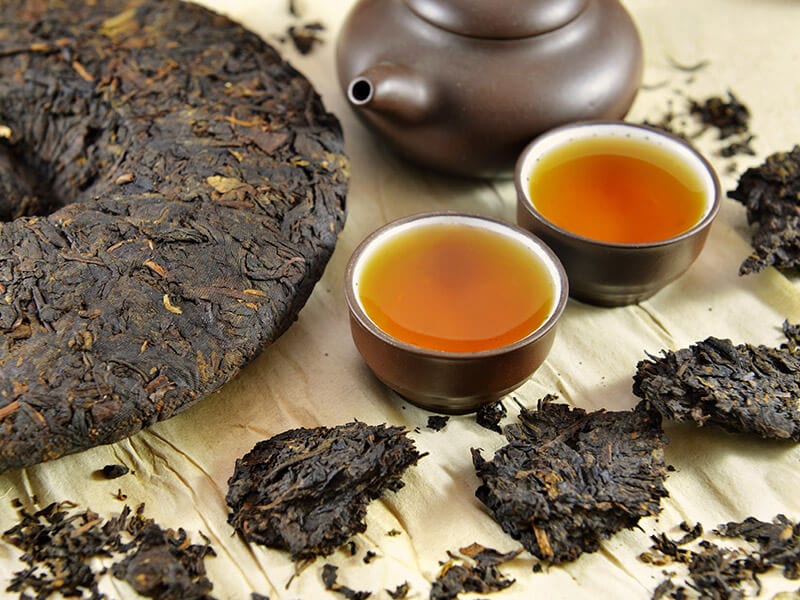
While most teas are vulnerable to bacteria and moisture, ruining their cherished flavors, pu’er tea (or pu-erh) from the breathtaking landscapes of Yunnan Province in southwestern China is the opposite.
Once a favored drink among the region’s ethnic groups, it gradually captured the entire nation’s heart thanks to its alluring, aged, and fermented qualities.
Pu’er tea traditionally requires extensive aging to develop its unique flavor fully. However, innovative manufacturers have devised methods to expedite this process significantly. This versatile tea comes in various packaged forms, such as cakes, bricks, or mushrooms.
While ripe (fermented) pu’er tea is well-known, its raw (non-fermented) counterpart also graces tea lovers’ palettes. Both varieties exhibit a warm, yellow, or reddish-brown hue while boasting a sweet, earthy taste.
Many vendors even infuse their creations with local herbs or spices, imbuing them with an irresistible, exotic profile.
Where to find: In Yunnan Province, you can order it online or from tea shops in big cities.
8. Kombucha
Alcoholic or non-alcoholic
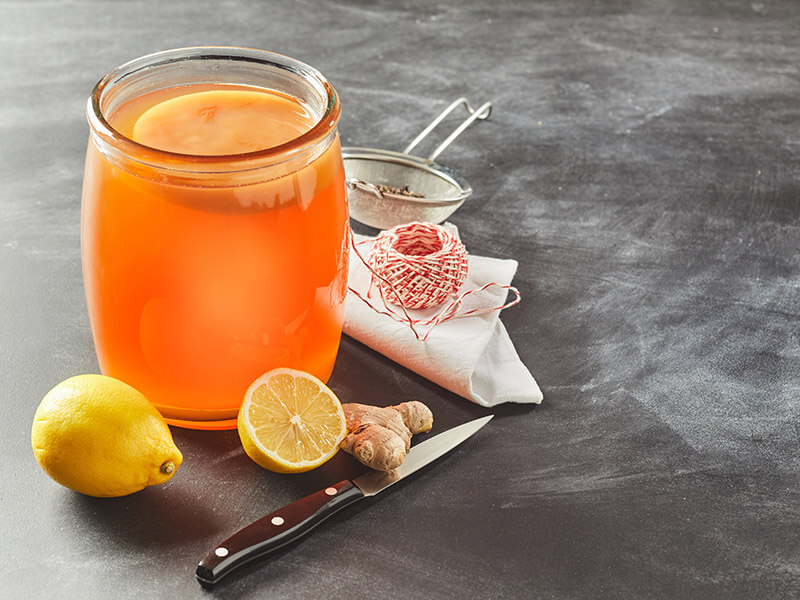
Kombucha is a perfect remedy for people with sore throats. It supposedly first appeared in ancient China before spreading to Europe.
While the drink is Chinese in origin, its popular name, “Kombucha,” seems to be a Japanese loan word. Chinese people usually refer to it as “hong cha jun,” meaning “black tea mushroom” in China.
In essence, Kombucha is a fermented, vitamin-rich liquid of black or green tea (or both). The factor behind this transformation is SCOBY (symbiotic culture of bacteria and yeast). People prepare this drink by growing SCOBY in a bottle of sugary tea for weeks.
It is a common practice to call the drink “Kombucha tea.” This is ironic because if the culture grows too much, the drink will have a high alcoholic content. Therefore, you should monitor your culture carefully.
Anyway, your hard work won’t go unnoticed. When you open the bottle and taste the fuzzy, brown drink, you can enjoy its fantastic balance of sweetness and acidity that will wonderfully stimulate your appetite. The flavor can also be fruity if you add spices and herbs.
Where to find: Although well-known as a Japanese beverage, Kombucha is still a traditional Chinese drink. You can find it at grocery stores and traditional medicine shops in the country, especially in populated cities.
Here is a peek into the complicated history of Kombucha.
9. Leung Cha (Cooling Tea)
Alcoholic or non-alcoholic
Cooling tea, or Leung cha, is a traditional Chinese herbal drink known for its cooling properties. This beverage has been a staple in Chinese culture for centuries during hot summer months. It is believed to help balance the body’s internal temperature and alleviate heat-related discomforts.
Leung cha is typically made from various herbs and plants with cooling properties, such as chrysanthemum, honeysuckle, and mulberry leaves. Other ingredients may include lotus leaves, wolfberry, Chinese licorice, and luohan guo, a natural sweetener.
The taste of Leung cha is quite distinctive, offering a combination of sweet, slightly bitter, and earthy notes. The herbs contribute a pleasant, floral aroma, while the natural sweeteners, like luohan guo, provide a subtle sweetness that balances the mild bitterness of some of the other ingredients.
The herbal blend is simmered in water to prepare Leung cha, allowing the flavors and medicinal properties to be extracted. Once the tea has cooled, people serve it over ice or chilled for an even more refreshing experience.
Where to find: At Chinese grocery stores.
Types Of Chinese Liquor
Alcoholic beverages are a mainstay of Chinese drinks as well as drinking culture. So read on to find out what kind of grown-up juice you should pay attention to.
10. Mijiu
Alcoholic
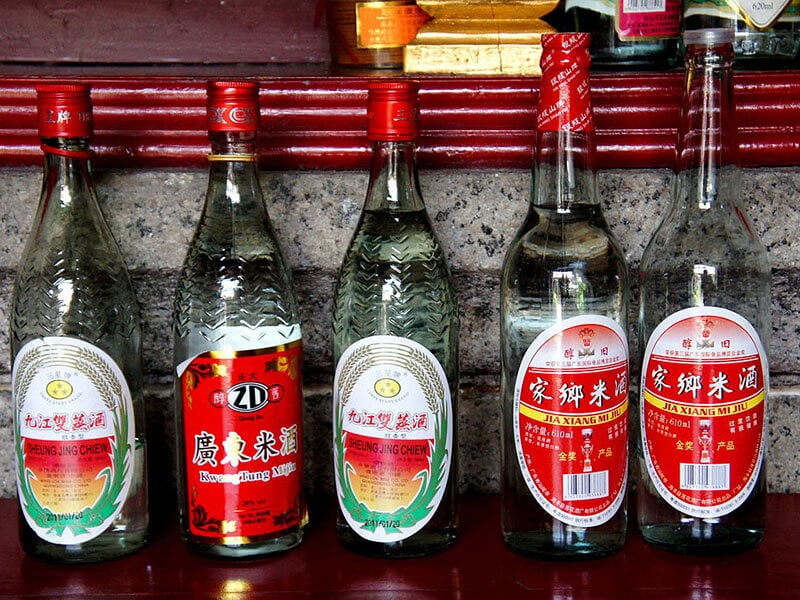
Many Chinese families in rural areas brew Mijiu for their own use.
Mijiu is an all-encompassing term that includes various varieties of glutinous rice-derived wine. It is as vital to Chinese cuisine as sake to Japanese foods or soju to Korean delights.
While the number of the Mijiu types can vary, they all share a combination of pungent sweetness and mild sourness. Also, their standard alcohol content is usually between 15% and 20%. Unlike Western wine, Mijiu needs to be served warm.
There are many ways you can consume Mijiu. One method is to flavor it with fragrant flowers, such as osmanthus, to create an even more tempting scented wine. Another approach is to use it in cooking since many Chinese dishes require its spicy power to achieve the best flavor.
Where to find: Mijiu is consistently among the main products of most liquor shops and bars in China. Restaurants should also have it on their drink lists.
11. Baijiu
Alcoholic
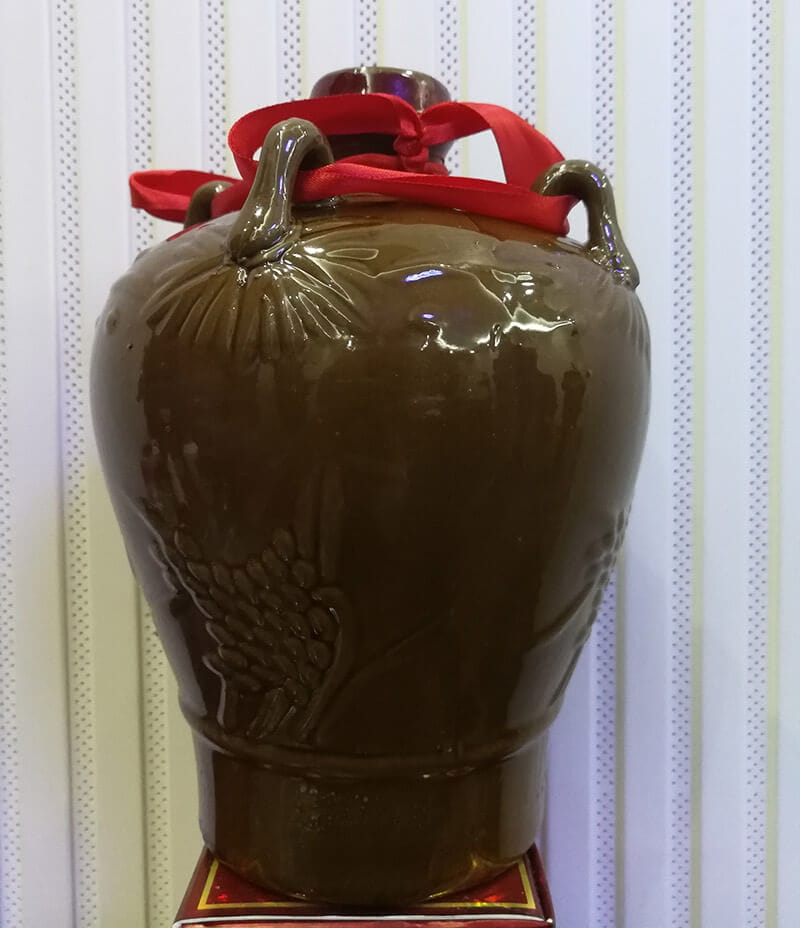
It’s hard to find a national drink that can represent the taste of China better than Baijiu. One reason is that it is usually restricted to China and overseas Chinese communities.
Baijiu is a strong drink whose alcohol content can range from 35% to 65%. The alcohol is a rich liquor from multiple ingredients, mainly fermented sorghum, wheat, sticky rice, or corn. That diversity demonstrates the richness inherent in the drink.
One of my favorite Baijiu is Moutai or Maotai, having a savory profile. Many people unfavorably describe the taste of Baijiu as “rotten fruit.” However, this transparent liquor can come in various aromas to suit everyone’s taste. Examples include light aroma Baijiu or strong aroma Baijiu with a deep sweetness and a spicy vibe.
Other notable varieties are sauce aroma Baijiu, which tastes like fermented bean pastes and is perfect for pickles, or the herbal, extra-strong aroma Baijiu from Hunan province. Once you get used to Baijiu, you will be able to understand an integral part of Chinese life.
Where to find: anywhere in China, but know that each region usually has its discrete version of Baijiu.
Explore everything you need to know about Baijiu here.
12. Jiuniang
Alcoholic
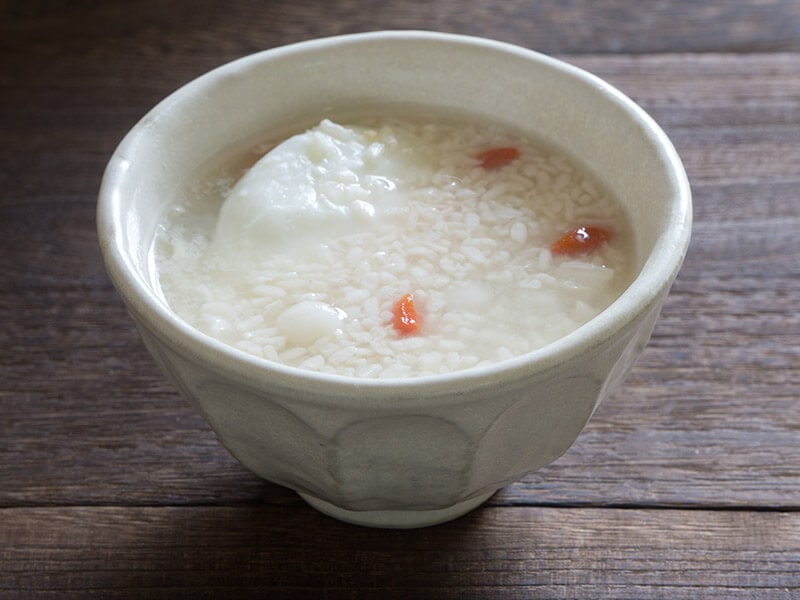
At first glance, Jiuniang appears to be a soup. Its pudding-like texture confuse people if it’s a drink or not. When you taste the milky-white, aromatic liquid, you can tell it is fermented sweet rice wine.
Chinese usually make Jiuniang from glutinous rice and yeast-containing fermentation starter. The process can create strong rice wine or rice vinegar. To make Jiuniang, however, local inhabitants have to end the process prematurely, which results in an insignificant amount of alcohol (2%).
It is common to consume Jiuniang with light Chinese side dishes to stimulate digestion in China. Its mild sweetness and alcoholic taste go a long way with any dishes. Don’t forget to savor both the liquid and the soft rice grains.
Jiuniang is a cornerstone of Chinese culture, an indispensable treat during the Dōngzhì Festival (Winter Solstice Festival). This is no coincidence, as the cold winter weather makes it easier to control the fermentation of Jiuniang.
Where to find: It is served at countless Chinese restaurants. Many families also brew their own Jiuniang.
13. Osmanthus Wine
Alcoholic
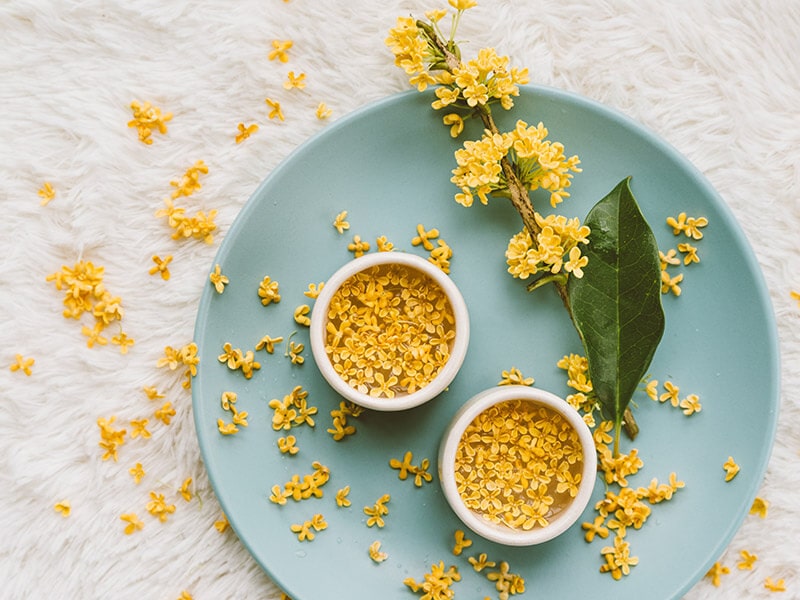
Osmanthus flower can turn weak rice wine into an aromatic spirit. The plant also goes by the name sweet olive or fragrant olive and grows in many parts of China.
Infusing the delicate, cinnamon-scented osmanthus into plain rice wine creates a delightful concoction. Osmanthus wine is particularly cherished during birthday celebrations and the Mid-Autumn Festival when the snowy, fragrant flowers are in full bloom.
Interestingly, the wine is sometimes called cassia wine, despite cassia (Chinese cinnamon) playing no role in its creation. This confusion likely arises from the similar pronunciation of the two plants in Chinese.
Beyond its captivating taste, osmanthus wine boasts medicinal properties that can help alleviate minor ailments. With an alcohol content of around 20%, it’s a delightful addition to any discerning drinker’s repertoire.
Where to find: At liquor stores and restaurants throughout China, but the Shaanxi and Guizhou provinces in Western China are good places to start.
14. Tsingtao Beer
Alcoholic
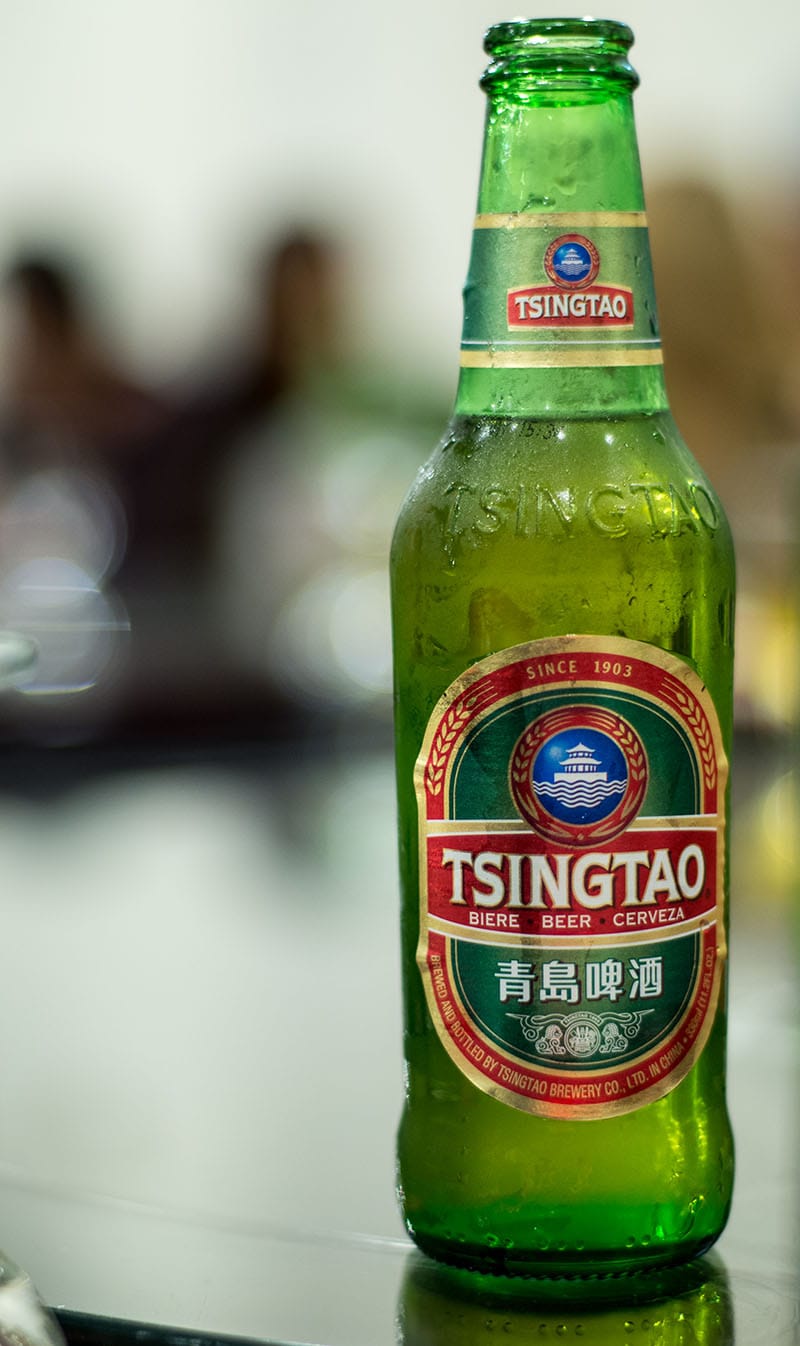
Tsingtao beer can be found in the United States, Japan, and many European countries.
What is the most popular Chinese New Year drink? Each region may have different answers. But on a national scale, Tsingtao beer is a winner. It is massively prevalent in China, accounting for about one-sixth of the domestic market share.
This standard pale lager also possesses an international appeal. More than 90 countries and regions around the world import this product. Perhaps its bright gold color, high-malty aroma, and balanced taste help endear the beer to all types of drinkers out there.
Tsingtao beer owes its creation to German settlers in Qingdao (Shandong Province), who founded a brewery in 1903. As China went through a turbulent historical period, the beer brand had its fair share of stormy fate before returning to its glory.
Today, the Tsingtao variety is undoubtedly the most recognizable Chinese beer. If you visit Qingdao, stop by the Tsingtao Beer Museum to learn more about its incredible journey to widespread fame.
Where to find: Supermarkets, restaurants, and bars all over China.
Stop by the beautiful city of Qingdao and taste its delicious Tsingtao beer.
15. Sinkiang Black Beer
Alcoholic
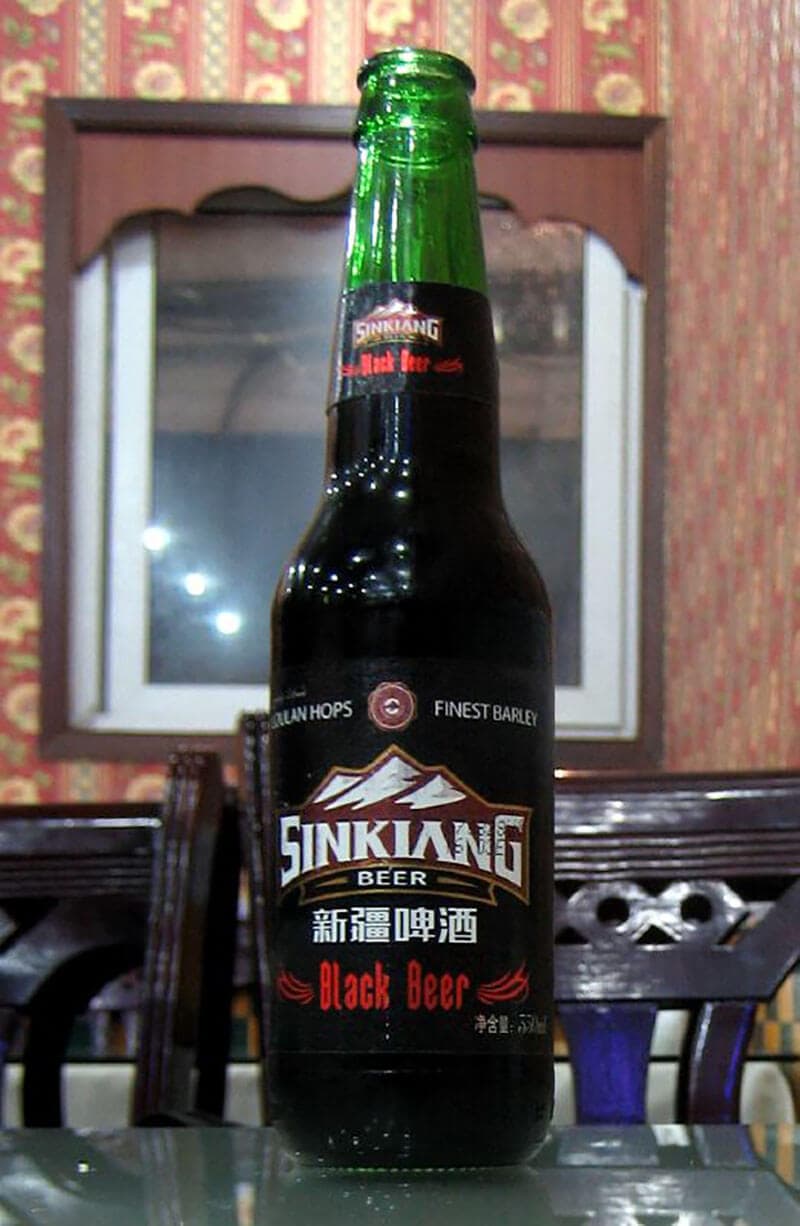
Sinkiang black beer is the perfect drink to accompany local foods.
Allow me to introduce Sinkiang black beer, also known as Xinjiang black beer. The alcohol is perfect for pairing with traditional Chinese dishes.
This is a fantastic drink from the breathtaking land of Xinjiang in northwest China. It is so good at accompanying spicy food because the local ethnic population created it to complement its spice-laden cuisine.
The main ingredient for the black beer is local hops from Loulan – Northwest China, to which the region’s distinct climate imparts a special taste. Sinkiang black beer has a nut-scented aroma and deep sweetness. It resembles Western dark larger, perhaps even more exotic and enjoyable.
Where to find: Xinjiang appears at restaurants and bars in large Chinese cities.
16. Kvass
Alcoholic
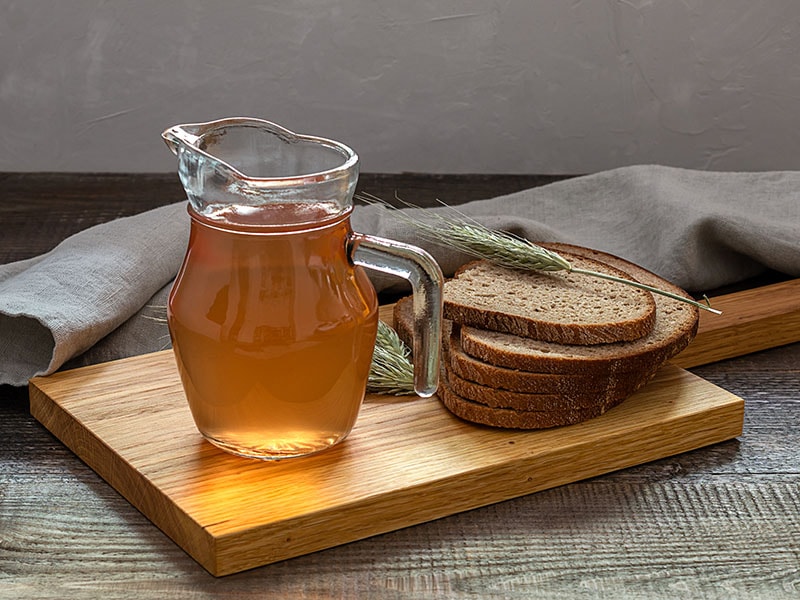
Kvass is an Eastern European beverage that has captured the Chinese hearts and taste buds! The traditional fermented drink, Kvass, hails from the lands of Russia, Ukraine, and Belarus.
This delicious concoction, known as “liquid bread,” boasts a unique, mildly sour, and slightly sweet flavor.
Thanks to intrepid travelers who were mesmerized by the drink during their trips to Eastern Europe. They brought back Kvass, which struck the heart of the Chinese population looking for a wholesome alternative to sugary beverages.
Chinese Kvass production stays true to its roots, using rye bread, water, sugar, and yeast to create a delightful brew left to ferment for several days. Local brewers from Xinjiang and Harbin infuse their Kvass with fruits, herbs, or spices unique to the region.
Kvass has an alcohol content of less than 1%, making it perfect for everyone. The Chinese market has embraced Kvass with an explosion of commercial and homemade varieties.
Where to find: Xinjiang or Harbin local stores. Other parts of China also have Kvass at liquor stores.
17. Shaoxing Wine
Alcoholic
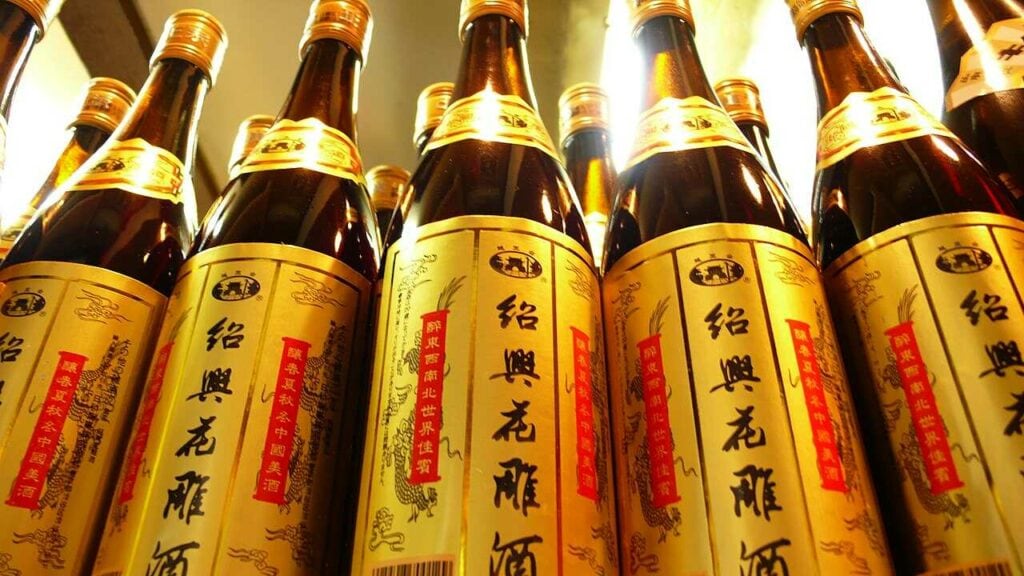
Shaoxing wine is an essential component of Chinese cuisine, renowned for its distinct flavor and role in various dishes. Often referred to as “yellow wine,” this unique beverage is made by fermenting glutinous rice, wheat-based yeast, and water.
To be officially recognized as Shaoxing wine, it must be produced in the Shaoxing province of Zhejiang in Eastern China. For cooking purposes, Shaoxing wine typically includes salt and spices.
The wine is known to have a high content of peptides, though their impact on flavor remains unclear. In addition, local employ a traditional production method, known as the Kāipá technique (开耙), involves stirring the rice and yeast mixture with a wooden hoe every four hours.
While glutinous rice is the most common base, Shaoxing wine can also be made using millet or sorghum, offering a variety of flavors and textures for culinary enthusiasts to explore.
Where to find: At local liquor or traditional convenience store in China.
18. Erguotou
Alcoholic
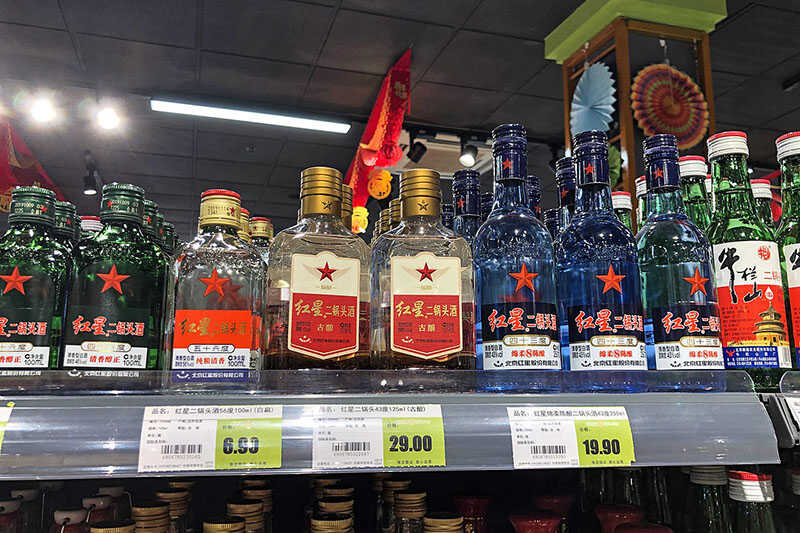
Erguotou is a lighter version of Baijiu, often considered the “Coca-cola” counterpart of the Chinese spirit. Translated as “second distillation,” the name Erguotou signifies its level of purity. With an average alcohol content of around 50% or 100 proof, it can be quite potent for those new to alcohol consumption.
Produced primarily from sorghum, Erguotou takes about six months to make. Commonly, the most famous brands of this spirit are Red Star and Niulanshan, with Beijing being a popular location for its consumption.
Its unique flavor and potency make Erguotou an intriguing option for adventurous drinkers seeking to explore Chinese spirits.
Where to find: Liquor stores or supermarkets in China.
19. Chhaang
Alcoholic
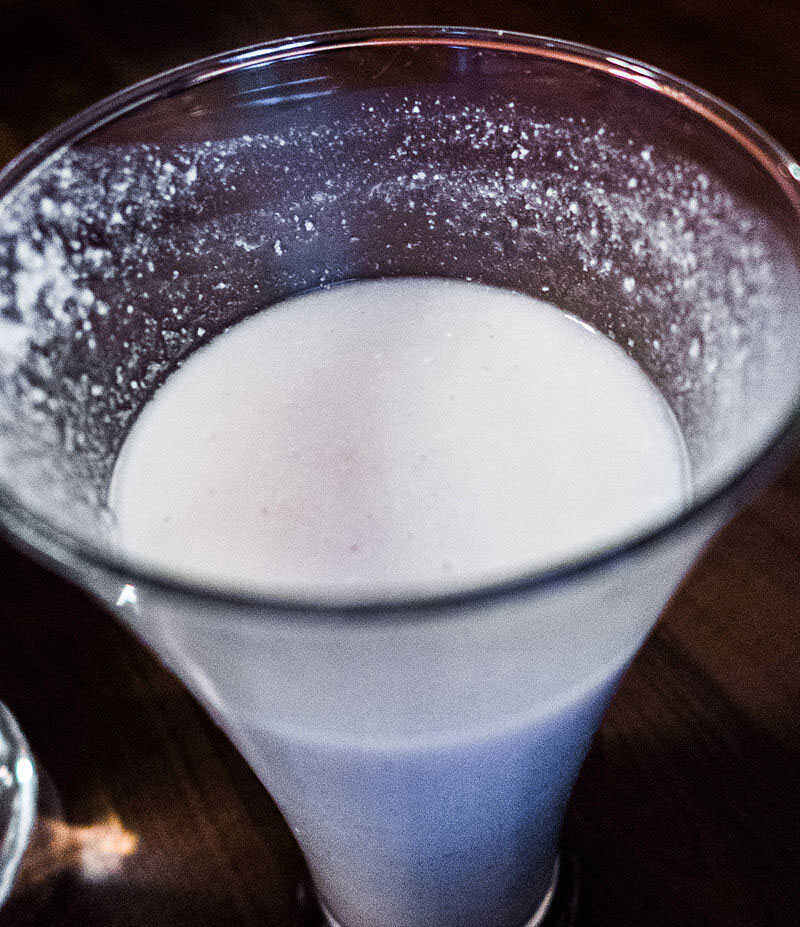
Chhaang is a traditional liquor from the Tibet and Nepal region, and it can also be found in the Himalayas. Commonly, the rice fermentation process for this drink takes about 2 to 3 days to complete. This beverage is typically white or light yellow and is usually enjoyed at room temperature.
However, it is served hot on colder days in a brass bowl or wooden mug, as people believe drinking Chhaang helps keep them warm. Chhaang is often consumed using a wooden straw or directly drinking from a container.
Interestingly, it is considered a relative of beer when made from barley, rice grains, or millet. Additionally, Chhaang is sometimes featured in Chinese medicinal soups for its tonic effect, as it is believed to boost immunity and provide other health benefits.
Where to find: Near the border of China and Tibet, especially in the mountainous area.
20. Xifengjiu
Alcoholic
Xifengjiu or Xifeng liquor is named after Fenghuang County in Shaanxi, where this distinct beverage is produced. The spirit is a type of Baijiu made from sorghum and Qū, a fermentation starter that consists of barley and pea.
With a relatively short fermentation period of just two weeks, Xifengjiu is unique in its flavor profile. The aroma of Xifengjiu is a combination of strong and light scents, classified as Feng or Phoenix aroma.
Interestingly, the majority of the Xifengjiu market, around 70%, is concentrated within Shaanxi province, making it a truly localized and treasured drink in the region.
Where to find: At the Shaanxi province or at vintage Chinese liquor stores.
21. Cocktail
Alcoholic
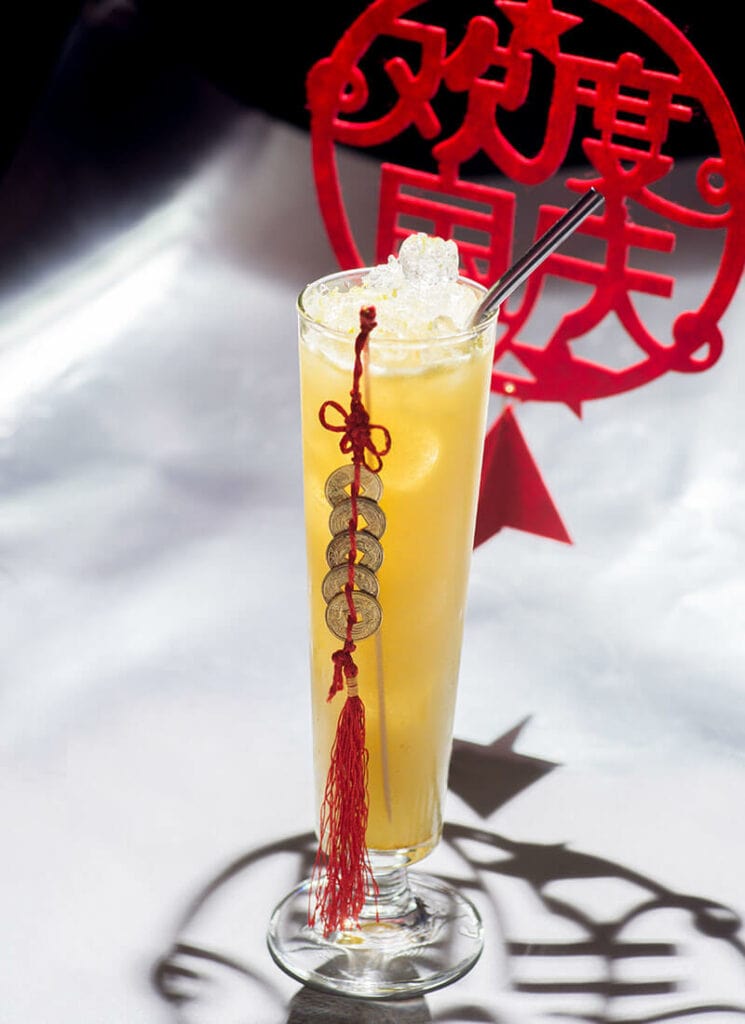
Cocktails have introduced a fresh concept to Chinese beverages, with many inventive creations emerging in recent years. Baijiu, a popular local spirit, often serves as the base for these mixed drinks, combined with fruity and aromatic components.
With its various forms, Baijiu is even more popular than vodka, rum, whiskey, and cognac among locals. These new cocktails infuse a tropical aroma and floral fragrance into many mixes, offering delightful and unique flavors.
Examples include the Hou Hai, a combination of Baijiu with pineapple juice and lychee puree, and the lychee martini, which features fresh lychee for a tangy, tropical profile. These innovative concoctions are perfect for pairing with Chinese cuisine, elevating the dining experience.
Where to find: At modern Chinese restaurants, bars, and clubs.
Other Marvelous Chinese Drinks
The following drinks are excellent choices for deliciously passing your time. Some even come with amazing health benefits, a nice added perk.
22. Yunnan Coffee
Non-alcoholic
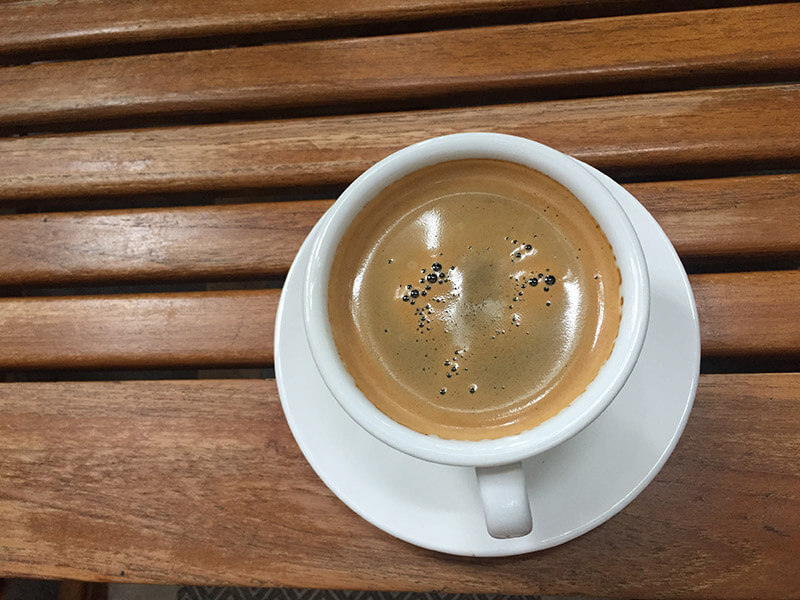
Formerly, China was completely absent from the global coffee map. But extensive efforts coming into effect since the late 1980s has turned the country into one of the world’s significant coffee producers. These days, almost all Chinese coffee comes from Yunnan Province.
Besides its abundant plant life, this southwestern province also has rich soil and a favorable climate. So the tropical coffee tree happily grows here, providing the Chinese with their own caffeine-rich delight.
Yunnan’s local inhabitants cultivate Arabica Catimor, Typica, and Bourbon coffee varieties. The fruits they produce have a delicious fragrance and a fruity sweetness that tastes just right.
Yunnan coffee is so excellent that all Starbucks outlets across mainland China utilize it. Its cinnamon-flavored beans, distributed by Aini, one of the most popular Chinese coffee brands, have delighted countless Starbucks fans since 2012.
Where to find: All domestic coffee products in China contain Yunnan coffee. You can also visit a Starbucks store for a blend of American and Chinese experiences.
See how Yunnan coffee is recognized for its quality here.
23. Bubble Tea
Non-alcoholic
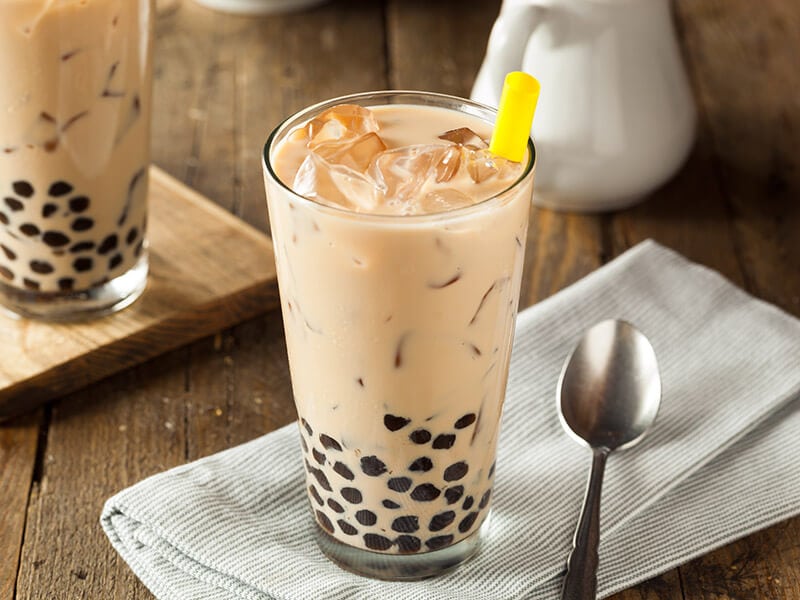
Originating in Taiwan around the 1980s, bubble tea (or pearl milk tea) quickly crossed the border of Taiwanese food culture to become a sought-after treat in mainland China, especially with the rise of Tiktok.
Since its arrival, this sweet tea has reigned supreme as a pleasure many Chinese people can’t live without. Interestingly, China even has a ready-to-drink milk tea named Meco, with various fruity flavors in colorful plastic containers.
A creamy bubble tea consists of tea, milk, and chewy tapioca pearls. The description sounds simple, but you can use any kind of tea and milk for this energy drink with endless combinations.
Regarding tea, the most popular choice is black tea for its pleasantly bitter taste mixed with milk’s fatty and sweet flavor, creating a killer combination. However, oolong tea and scented green tea, especially matcha, are no less enjoyable.
In terms of milk, the richness of whole milk makes it the ideal option for bubble tea. Nevertheless, anyone anxious to keep their weight in check can switch to skim, soy, or coconut milk. Those ingredients will impart an additional fruity scent to your tea.
From a lone island, bubble tea has won Chinese affection and that of many Western countries. One of the best bubble tea combos is munching tapioca pearls and yummy Hong Kong foods. The drink is always all the rage in that region.
While it can be served both hot and cold, many people in China overwhelmingly go for iced bubble tea. Enjoying the tea’s cool sweetness in the summer heat is as close to heaven on earth as possible.
Where to find: Cafes, tea shops, and restaurants in China.
24. Suanmeitang
Non-alcoholic
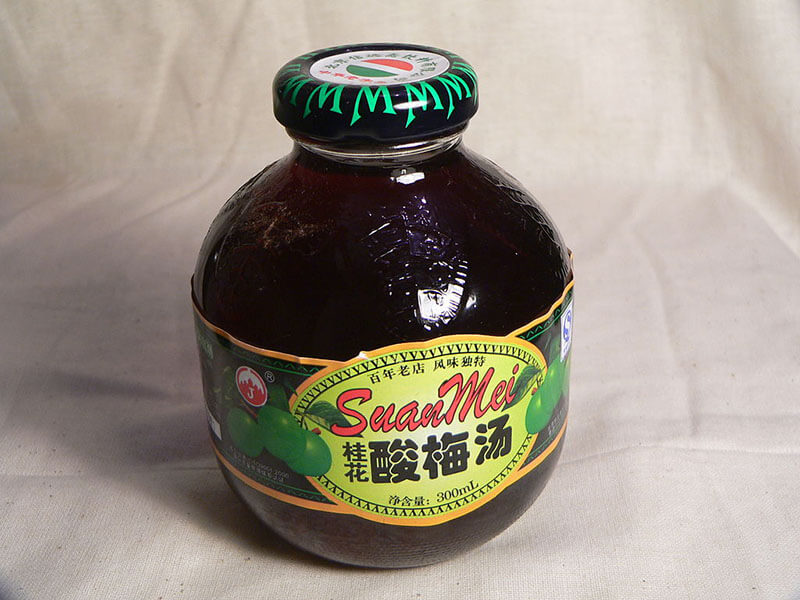
True to its name, Suanmeitang has a thirst-quenching sourness.
When your body is in heat, you will develop nasty symptoms: acne on your beautiful face, a dry mouth, or a sore throat. Suanmeitang, translated to “sour plum drink,” is a perfect remedy while enjoying the refreshing flavor of Chinese fruits in this drink.
It is a traditional Chinese beverage brewed from smoked plums, rock sugar, liquorice, and aromatic ingredients such as osmanthus or rose blossoms. The first recipes of Suanmeitang date back to the Song Dynasty, but they only got standardized in the early 18th century.
A gulp of Suanmeitang, preferably with ice, will please your taste buds tremendously. You will tingle with its balanced blend of fruity sweetness, satisfying sourness, and a slightly salty undertone that completes the experience nicely.
Suanmeitang is extremely effective at reducing your body’s heat buildup, making it an excellent summertime drink. The tangy flavor of this plum-derived goodness can also stimulate your appetite and aid your digestion wonderfully.
Where to find: You can find it at cafes, restaurants, as well as traditional medicine shops in China.
25. Soybean Milk
Non-alcoholic
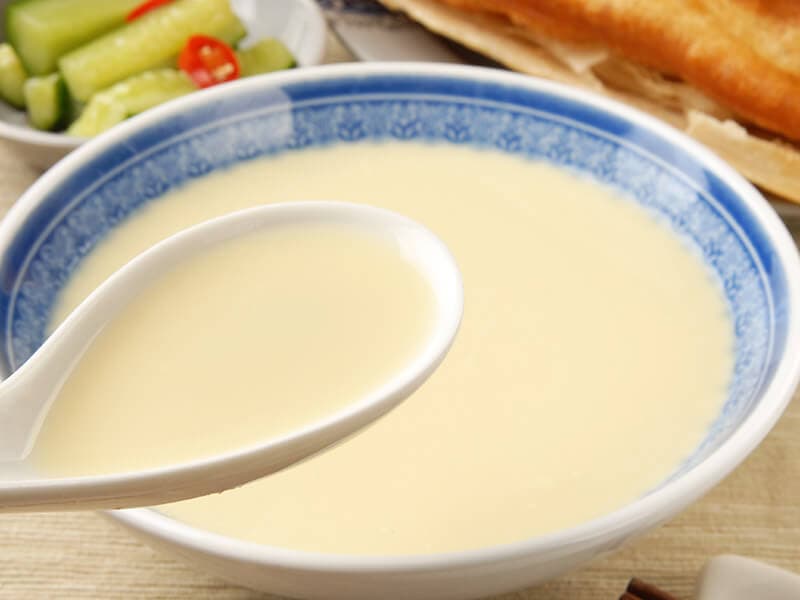
Soy milk pudding is one of the most mouth-watering Chinese desserts to savor. But do you know that soybean milk enjoyed alone is no less delicious? This protein-rich, drinkable treat is immensely prevalent throughout China, especially appealing to vegetarians.
Soybean milk is made by boiling soybean flour in water and filtering out any solids. The result is a white, fragrant “plant milk” thicker than cow’s milk but much easier to digest. It is full of proteins, minerals, and vitamins but blissfully devoid of lactose and harmful saturated fat.
Eastern Han Dynasty’s China appears to be the birthplace of this milk. By the late 20th century, soybean milk established a firm foothold in the Western world. Modern versions of the milk come in many flavors, namely mung bean, lily, and red date.
Where to find: Cafes, restaurants, grocery stores, and supermarkets in China. Beware that commercial soybean milk may sometimes contain cow’s milk for a fattier flavor.
Knowing how to concoct homemade soybean milk will come in very handy.
26. Coconut Milk
Non-alcoholic
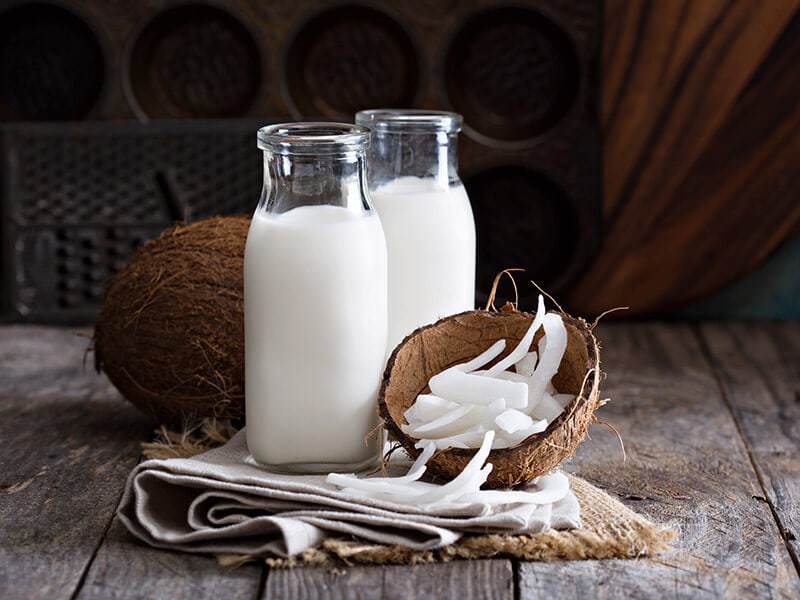
While coconut water is healthy and refreshing, coconut milk will delight you with its nutty sweetness. It is made from grated coconut, sugar, and hot water. Coconut milk sold in cans and cartons is a favorite product among the Chinese people, especially in the south.
Besides soybean milk, coconut milk is a vegan pleasure everyone can enjoy in China. Different varieties contain varying amounts of fat. Thick coconut milk is so rich that it can cause weight gain, while coconut skimmed milk isn’t fatty. Thin coconut milk is the middle ground.
Where to find: Cafes, supermarkets, and grocery stores throughout China, especially in the southern region.
27. Salt Soda Water
Non-alcoholic
Shanghai salt soda water is a distinctive and traditional beverage that the people of Shanghai enjoyed in the 60s before the appearance of Coca-Cola.
The beverage is made by blending soda water with a pinch of salt and various flavorings, such as preserved mint or lemon. While adding salt to a drink may seem unusual, it balances and amplifies the flavors, creating a truly thirst-quenching experience.
Where to find: At local convenience stores or Shanghai local refreshment shops.
28. Nongfu Spring C100
Non-alcoholic
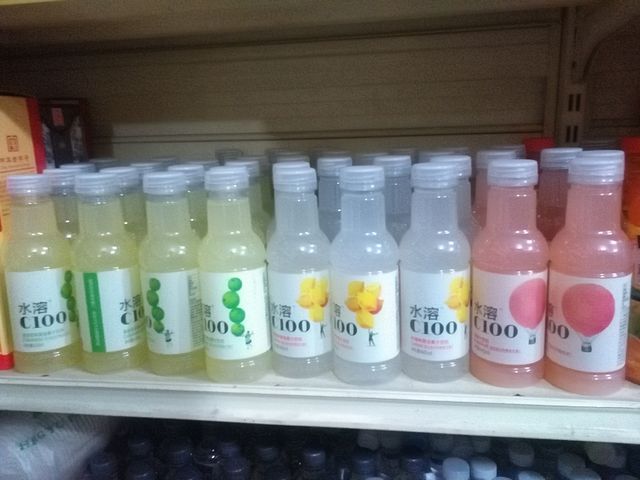
Nongfu Spring C100 is a popular and refreshing Chinese beverage produced by Nongfu Spring, one of China’s bottled water and beverage companies. Launched in 2008, C100 has gained widespread popularity among Chinese consumers.
C100 is a vitamin C-rich, fruit-flavored drink with 100% natural fruit juice content used in its formulation. The beverage boasts an impressive lineup of flavors, including lemon, orange, and grapefruit, catering to various tastes.
Nongfu Spring C100 can be found in convenience stores, supermarkets, and online platforms throughout China. In general, energy drink link C100 usually goes by the name “mai dong” in China, with numerous brands to explore.
Where to find: At local stores or shops in China.
29. Wahaha Nutri-Express
Non-alcoholic
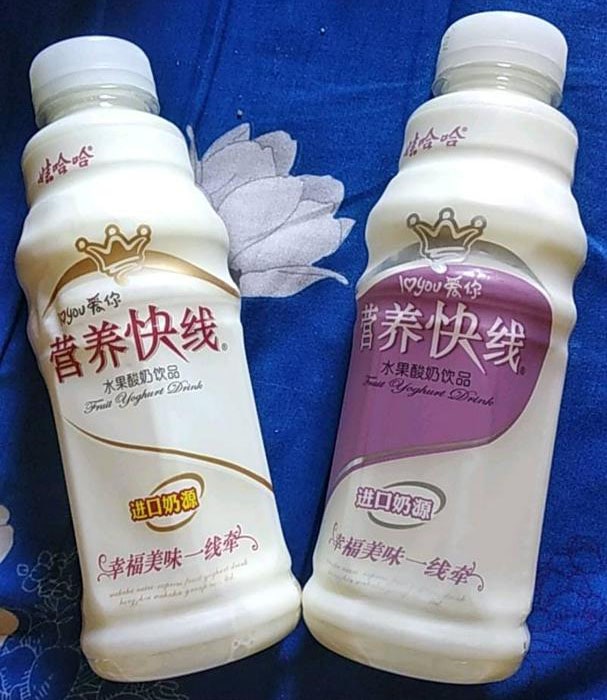
Wahaha Nutri-Express is a popular Chinese beverage, especially for people who like partaking in sports activities. The drink comes from the Hangzhou Wahaha Group, a Chinese beverage company that produced it in the mid-1990s.
Nutri-Express is a unique concoction combining the nutritional benefits of milk, fruit juice, and plant-based ingredients. The beverage is available in a variety of flavors with a lighter consistency when compared to yogurt.
The taste of Wahaha Nutri-Express is characterized by its smooth, creamy texture and fruitiness. The drink’s popularity can be attributed to its well-balanced taste, making it a versatile choice for children and adults.
Where to find: At Chinese supermarkets and stores.
3 Chinese Beverages To Make
While many Chinese drink recipes are difficult to replicate, you will have no trouble concocting the following delights at home!
1. Making Chrysanthemum Tea
Moderate consumption of chrysanthemum tea can help reduce the risks of serious diseases such as cancer, diabetes, and stroke. So why don’t you start your morning with this delicious tea?
Ingredients: dried chrysanthemum flowers, water, and sugar (optional).
Step 1: Boil water in a kettle.
Step 2: Put 4-5 dried chrysanthemum flowers in a mug and pour hot water.
Step 3: Steep for 3-5 minutes and remove the flowers. Enjoy now, or add sugar for sweetness first.
2. Making Bubble Tea
Commercial bubble tea usually contains excessive sugar. So what can be better than enjoying your homemade tea with just the right sweetness? This recipe uses strong black tea. The accompanying milk and ice cubes will dilute it.
Ingredients: black tea bags, tapioca pearls, whole milk, and sugar.
Step 1: Steep the tea bags in hot water.
Step 2: Cook the tapioca pearls in water until they are soft yet chewy.
Step 3: In a large glass, mix tea, milk, tapioca pearls, and sugar. Add some ice cubes and enjoy.
It’s time to bring the sweet flavor of bubble tea to your home.
3. Making Soybean Milk
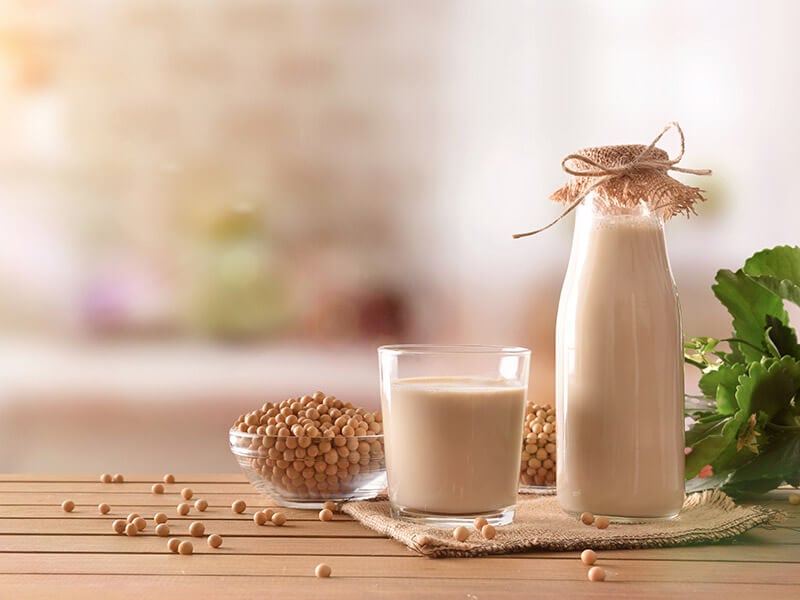
It only takes about half an hour to unlock the door to this protein-packed, easily digestible drink. Yellow soybeans guarantee your milk’s best flavor and nutritional value. You can keep your homemade milk in the refrigerator for 7-10 days.
Ingredients: soybeans, water, vanilla extract (optional)
Step 1: Soak the soybeans in water overnight.
Step 2: Drain the soybeans and remove their outer skins,
Step 3: Blend the soybeans with a food processor until smooth.
Step 4: Strain the pureed soybeans with a cheesecloth or a fine mesh.
Step 5: Cook the mixture with water for 20 minutes, don’t forget to stir and skim the foam.
Step 6: Cool the milk and add vanilla extract for a more fragrant flavor.
Importance Of Beverages In Chinese Culture
China has a deep root in history, symbolism, and social connections regarding drinks. Various drinks have been intertwined with rituals, ceremonies, and daily life for thousands of years, reflecting the essence of Chinese traditions and hospitality.
Tea, in particular, holds a key position in Chinese culture. As a symbol of harmony, tranquility, and wisdom, tea has become an integral part of Chinese society. Tea is also a symbol of hospitality, friendship, and respect.
Tea ceremonies serve as both an expression of respect and a medium for fostering relationships, especially known as Gongfu Cha. Also, the art of tea brewing offers a calming, meditative experience that embodies the spirit of mindfulness.
Alcoholic beverages, such as Baijiu and Huangjiu, have long been associated with celebrations, festivals, and dining events. These libations unite people, strengthening bonds in the Chinese community.
Meanwhile, the consumption of herbal drinks, fruit infusions, and medicinal concoctions showcases the wisdom of Traditional Chinese Medicine, emphasizing balance, nourishment, and well-being.
In recent years, modern Chinese drinks like bubble tea have become popular not only in China but also worldwide. These trendy beverages, often colorful and customizable, have become an integral part of contemporary Chinese food culture and a symbol of the country’s ability to adapt and innovate.
FAQs
Explore a few more questions regarding Chinese beverages. In this section, you can uncover more interesting facts about your favorite drinks.
What Are Your Favorite Chinese Refreshments?
Many Chinese drinks have a rich history spanning thousands of years. Others are modern inventions, sometimes from the outside, that quickly take root in the country. They exist together in harmony and enrich the vast Chinese cuisine.
When you savor finger-licking Chinese foods, don’t forget to pair them with the wonderful drinks I’ve told you about. Even better, you can brew it at home, making certain adjustments to suit them better for your private enjoyment.
If you like this post, it will mean a lot to me if you tell your friends and loved ones about it. Please feel free to share your thoughts and experiences in the comment section. Thank you very much!
